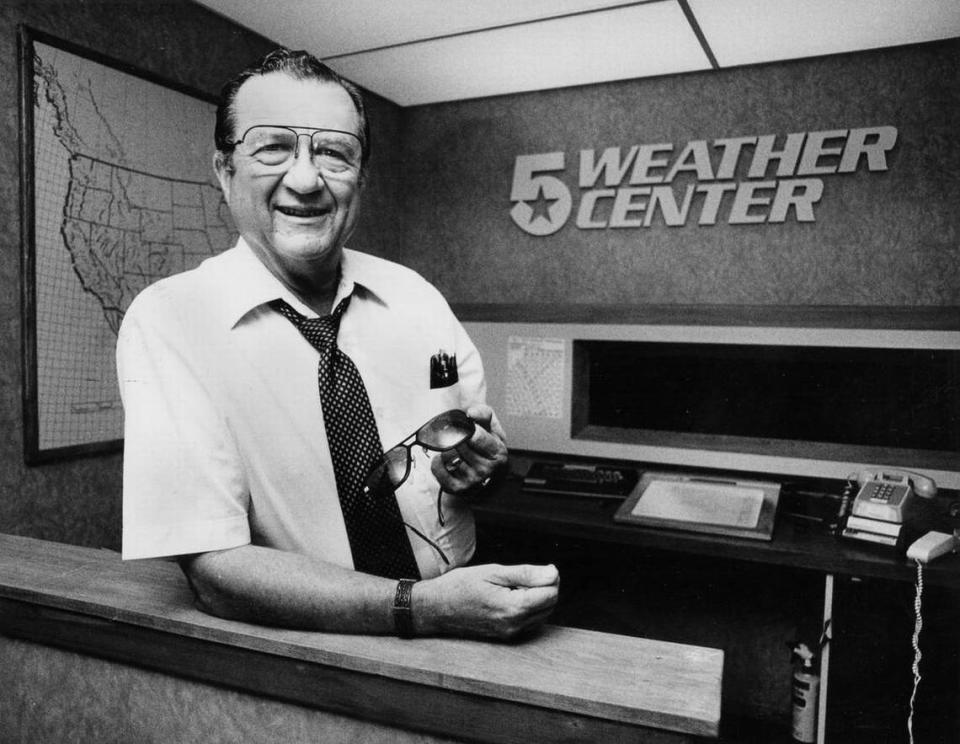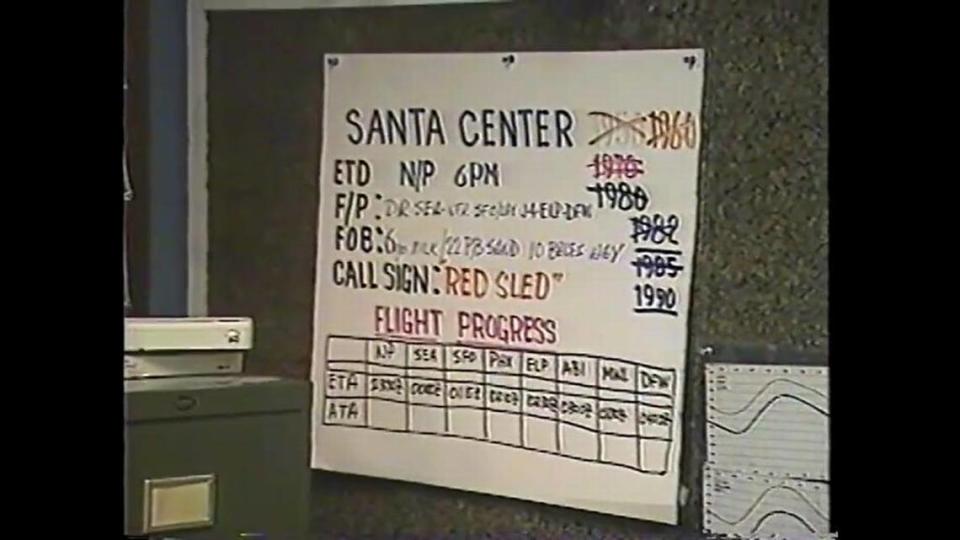For 34 years, the ‘World’s Greatest Weatherman’ tracked Santa by radar from Texas
- Oops!Something went wrong.Please try again later.
For a generation, children watched for him every Christmas Eve.
Not Santa. We knew he’d be coming.
We were watching for Harold Taft of KXAS/Channel 5, the “World’s Greatest Weatherman.”
We found out Santa was coming the same way we found out about rainstorms or twisters: Harold Taft showed us on the radar.
Of all the mysteries and wonders of the Christmas season, one of the greatest for local children from 1956 through 1989 was Taft’s Santa radar sightings on the Christmas Eve 10 p.m. news.
Years before Storm Track or triple Doppler, Harold Taft’s radar was precise enough to pick up a loaded sleigh and reindeer speeding southward from somewhere north of the Red River.
“Santa’s over Greenland now,” he would announce with a sly grin, yet in the same authoritative tone that made his weather forecasts the local favorite for 42 years.
Taft was not simply a weather anchor. His title was “chief meteorologist.”
From Oct. 31, 1949, when he and then-WBAP launched the nation’s first regular TV weather segment, until his final newscast on Aug. 30, 1991, he was one of the most accurate and trusted forecasters in America.

The bumper stickers on cars across North Texas needed no last name.
They read simply: “I Believe Harold.”
He put on a no-nonsense report, except on Christmas Eve.
“It was something fun, kind of a harbinger of Christmas,” recalled Jim Borden, a 1980s producer of the 6 p.m. and 10 p.m. newscasts.

Since 1955 and the Cold War era of missile defense, the North American Air Defense Command (NORAD) has tracked Santa’s travels.
It started by accident, when children dialing a Santa hotline in Colorado Springs, Colorado, instead reached the defense post.
A senior officer in charge playfully asked the staff to detect Santa’s current position, and kids loved it.
Taft started tracking Santa the next Christmas Eve, in 1956, years before the age of computer graphics or digital effects.
Former technical director Dick Shanklin was behind a camera on Christmas Eve from 1970 to 1984. He remembered zooming in on a sleigh-shaped outline as Santa neared, and then mixing camera shots to show the radar.
“It was a tradition,” he said. “Everybody enjoyed doing it.”
Not as much as we enjoyed watching.

